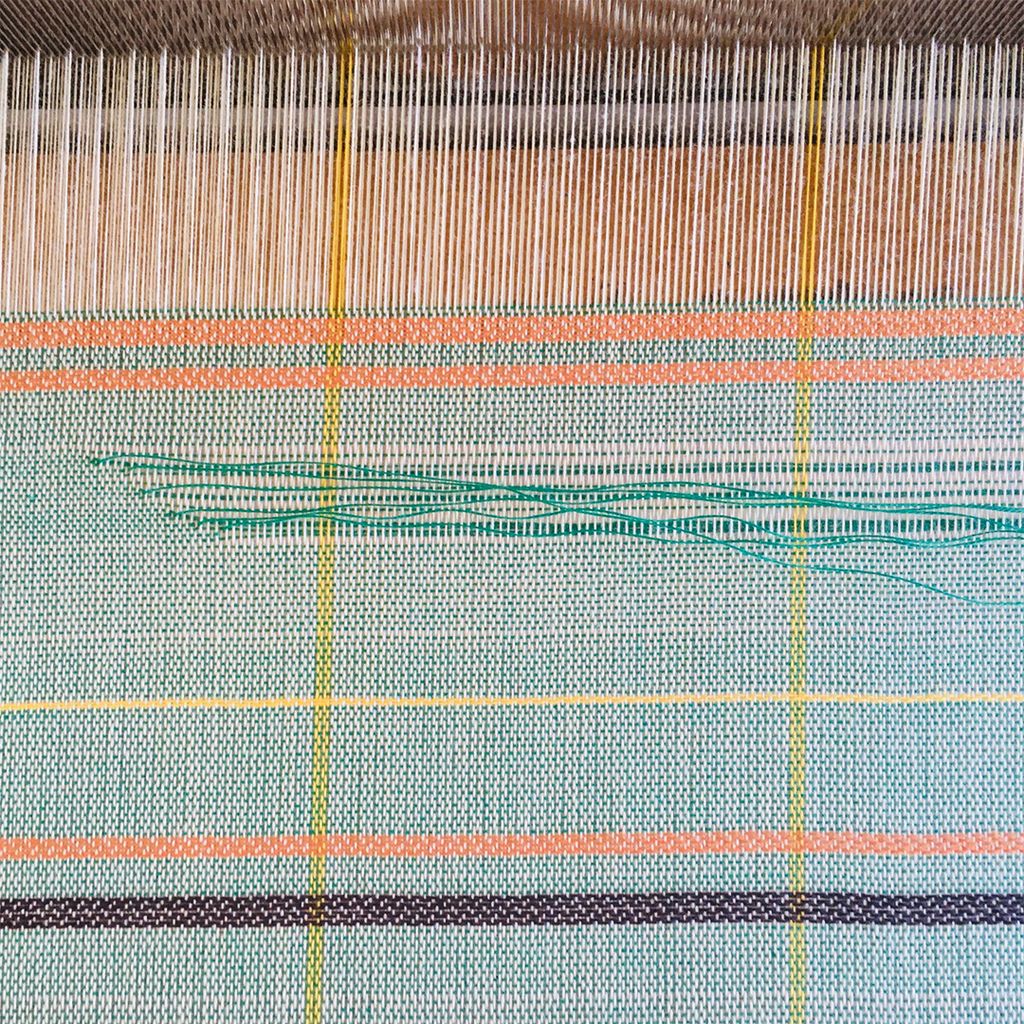Dominique Hurth: Running stitch and weaving fault
In her three-part intervention in the house of the female guards, Dominique Hurth addresses the ostensible 'cosiness' of the accommodation for the female concentration camp personnel, and the brutal duality of the place, which was a site of the crime and a place of residence at the same time.
The point of departure for her investigation are private photographs of the apartments, which provide insights into details of the domestic furnishings. Curtains, upholstered corner benches, tablecloths, drawers with glass figures, cushions, carpets, and other objects suggesting a comfortable living situation were examined more closely by the artist and, together with research in women's and interior decoration magazines of the 1930s and early 1940s, placed in an expanded socio-historical context.
Together with a textile designer, several curtains were woven anew with intentional weaving faults and running stitches, which frame (or block) the view to the outside, which respectively discloses the idyllic settlement of the warden's houses, the Lagerstraße and the entrance gate of the concentration camp. Furthermore, collages in the bathroom deal with the everyday life and hygiene culture of women informed by the motif of the bathtub. Not far from there is an installation masquerading as a visitors' bench that combines the traditional female craft of embroidery with fragments from Irma Grese's court transcripts from the Bergen-Belsen trial (1945).
Dominique Hurth's installations have been presented internationally in museums and galleries, including the Palais de Tokyo (Paris), Württembergischer Kunstverein (Stuttgart), Tieranatomisches Theater (Berlin), Fundacio Tapies (Barcelona), Hamburger Bahnhof (Berlin), MAMO-Cité Radieuse (Marseille).




